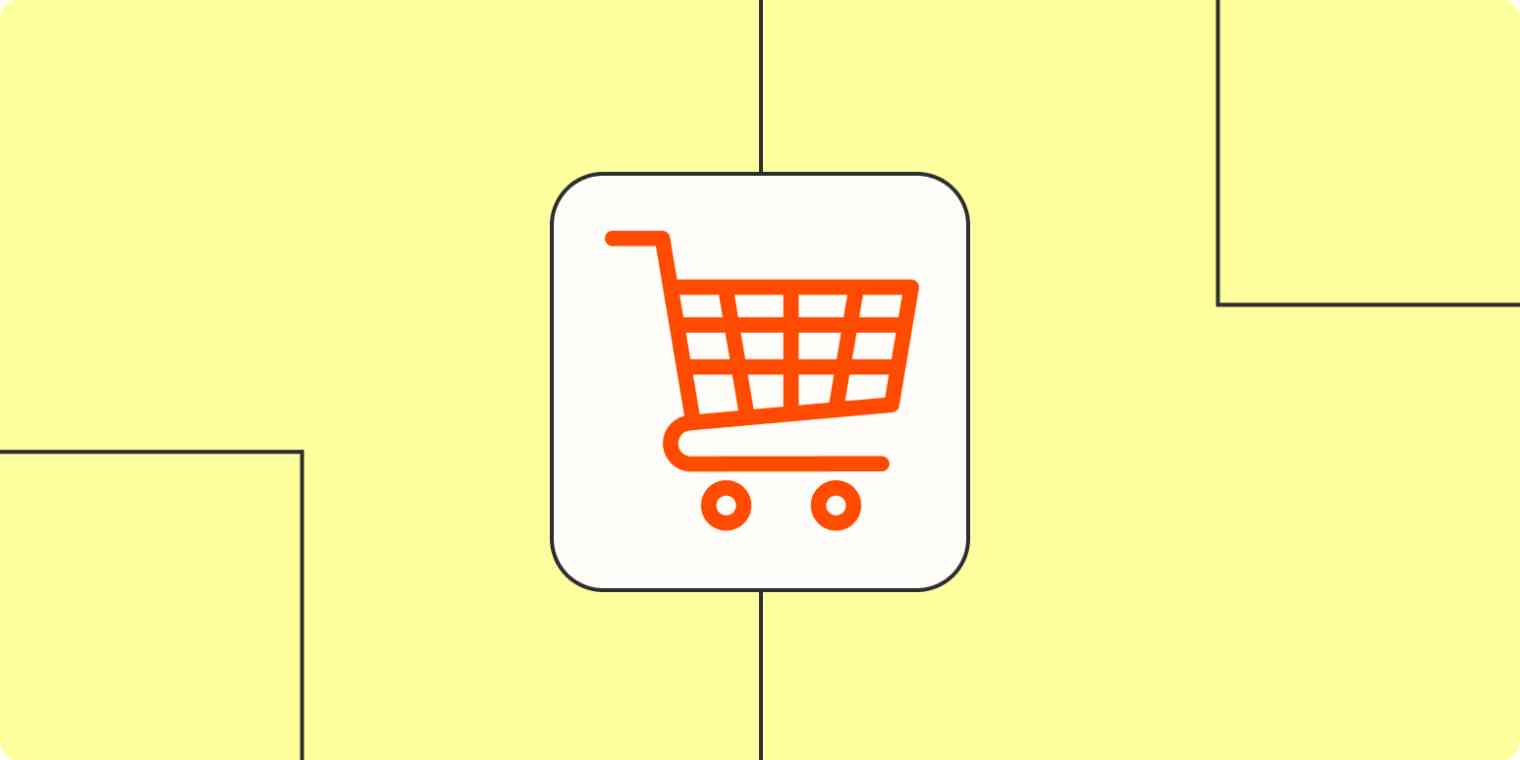I used to work at a children's shoe store, and I had a knack for turning a shoe purchase into a package deal. We kept elastic laces right by the checkout, and when I could tell a parent was nervous about their kid having laces for the first time, I'd recommend trying elastic to make the process easier. This was a cross-selling tactic, a strategy businesses use to sell more, with less—less time, less money, less resources.
In the same vein is upselling, another "buy bigger and better" tactic that can be applied to virtually every industry: software, retail, finance, telecom, manufacturing, real estate—you name it.
Upselling and cross-selling are often confused because, in some ways, they accomplish the same goal of increasing the amount a customer will buy. But there are distinct differences between the two, and if you can master them, they can both be uniquely instrumental to your business's success.
Here's a guide to the difference between upselling and cross-selling, as well as examples and tips on how to apply them to your business.
Table of contents:
What is upselling?
Upselling is about upgrading the customer to a bigger or better version of the product or service they're already buying. Virtually every modern business does some form of upselling, but one of the most common examples can be seen in an industry we all know and love: food.
Think specifically of the fast food industry, where customers are always encouraged to "supersize" the size of an item. Ordering small fries? Make it a large for only an extra 25 cents.
Once you know what upselling looks like, you'll start to notice it everywhere. More examples include:
Promoting a warranty when someone buys an appliance
Suggesting upgrading to a spa package when someone goes to book a massage
Offering more analytical accounting services in addition to your standard transitional bookkeeping services
When someone hires you to design their logo, proposing an entire branding package instead
Suggesting the fleece-lined version when someone's about to buy leggings
When to use upselling
Generally, upselling works best when the customer is in the middle of a purchase decision or has just decided to purchase. But here's the catch: you can't be pushy or sneaky. If you are, the customer will notice, feel like prey, and you may lose not only this sale but any future sales too.
Here's when you should go for the upsell:
When the customer has expressed interest in a particular tiered product or service (think iPhones or app subscriptions)
During the checkout process, when the customer is already in a buying mindset
In response to specific customer inquiries, where an upsell can provide a tailored solution
As part of a loyalty program or customer retention strategy, to reward and incentivize repeat business
What is cross-selling?
Cross-selling is about getting customers to buy different, related items in addition to what they're already buying. The most effective cross-sellers pitch items that will enhance whatever the person is buying or make using that item much easier.
The most important thing to keep in mind is that while products you suggest don't need to be extremely similar, they do need to be complementary. Cross-selling isn't just about getting customers to buy more items right this moment—it's about exposing your customers to new products and offerings they may not have seen before. When coupled with a purchase your customer is already set on buying, your brand exposure can have more significant weight than you might expect. You may not make the extra sale today, but you increase the likelihood that the customer comes back at some point down the line.
When to use cross-selling
Figuring out when to cross-sell requires paying close attention to individual customer needs and finding ways to map them back to complementary offerings. Like when your waiter cross-sells you on a bottle of wine that pairs perfectly with your pasta—yeah, they want you to buy more, but there's added value behind it.
Here's when you can add value to a customer's experience with a cross-sell:
When a customer is purchasing a product or service that naturally pairs with another item
When you can bundle items together, like offering a discounted package of related software tools to encourage customers to buy several items rather than just one
When you have insight into the customer's browsing activity
When launching a new product or service, promote it to existing customers who have previously purchased related items
During customer support interactions, suggest relevant cross-sells that can address their specific needs or concerns
What's the difference between cross-selling and upselling?
Both cross-selling and upselling involve convincing an existing customer to increase the amount they're buying. But here's the difference:
When you're cross-selling, you're working specifically to get the customer to make additional purchases that would go well with what they originally intended to buy.
When you're upselling, you're not necessarily suggesting more items, but convincing the customer to buy the bigger, better, and more expensive version of their original purchase.
Let's look at examples. First: cross-selling. When you send out marketing or confirmation emails to recent buyers, you might include products that are similar to whatever that recipient bought. Often this results in a new sale, but even when it doesn't, it still exposes the customer to other products they may not have known existed. That's cross-selling.
Let's go back to the shoe store for upselling. People often came in wanting to buy slides or flip-flops for summer. Instead, I would pitch them a more durable, closed-toe sandal (like Keens) that would last more than two weeks and kids could safely play in. They got a better product, and I turned a $10 sale into a $50 sale.
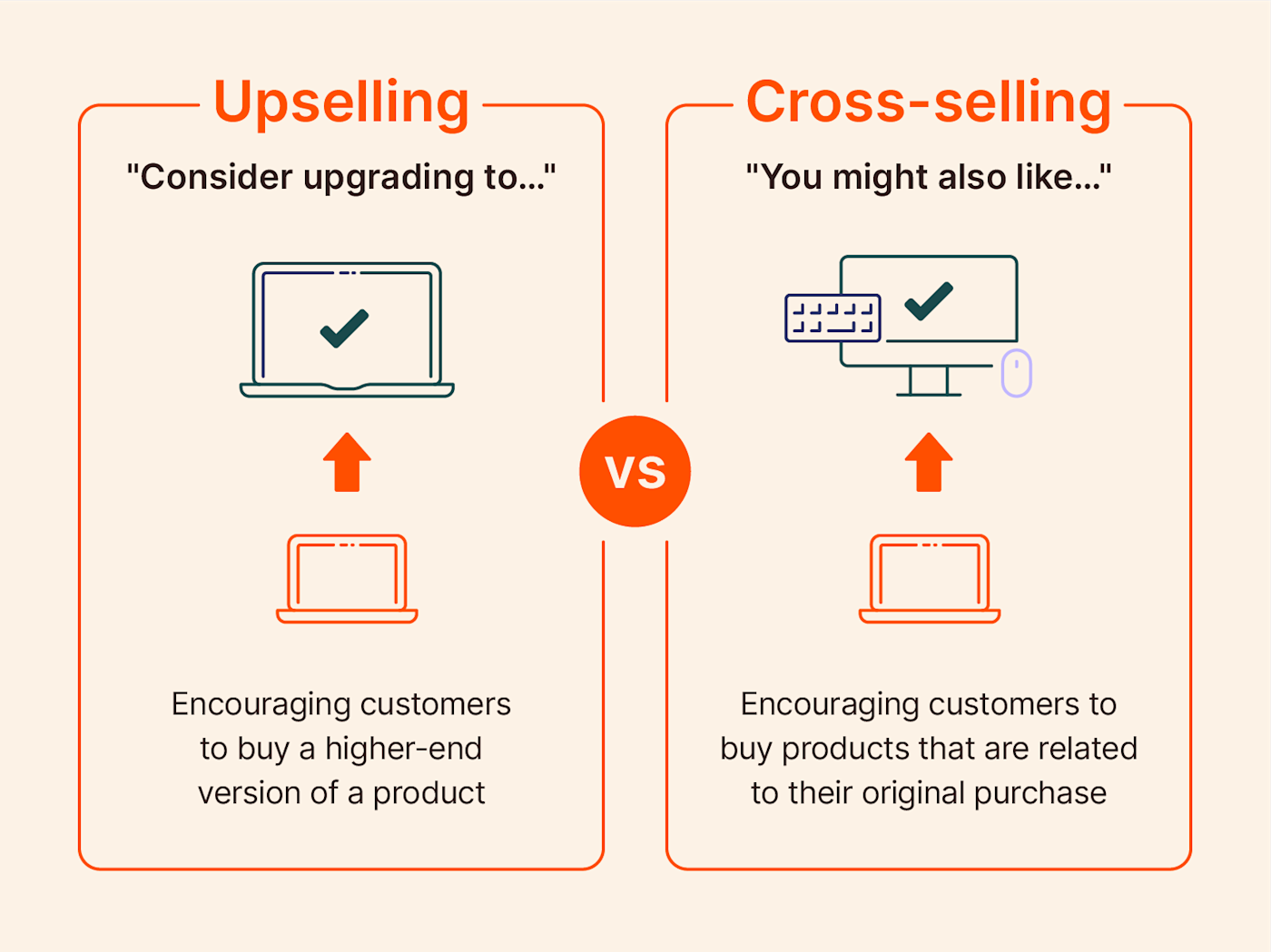
6 examples of upselling and cross-selling in action
One of the easiest ways to learn the difference between upselling and cross-selling is to look for examples of both within the same industry or even at the same company.
Upselling examples
Upselling works in all industries, not just consumer-focused ones. If your business pays for software, for example, you've almost definitely seen upselling in action. Let's take a look at Airtable.
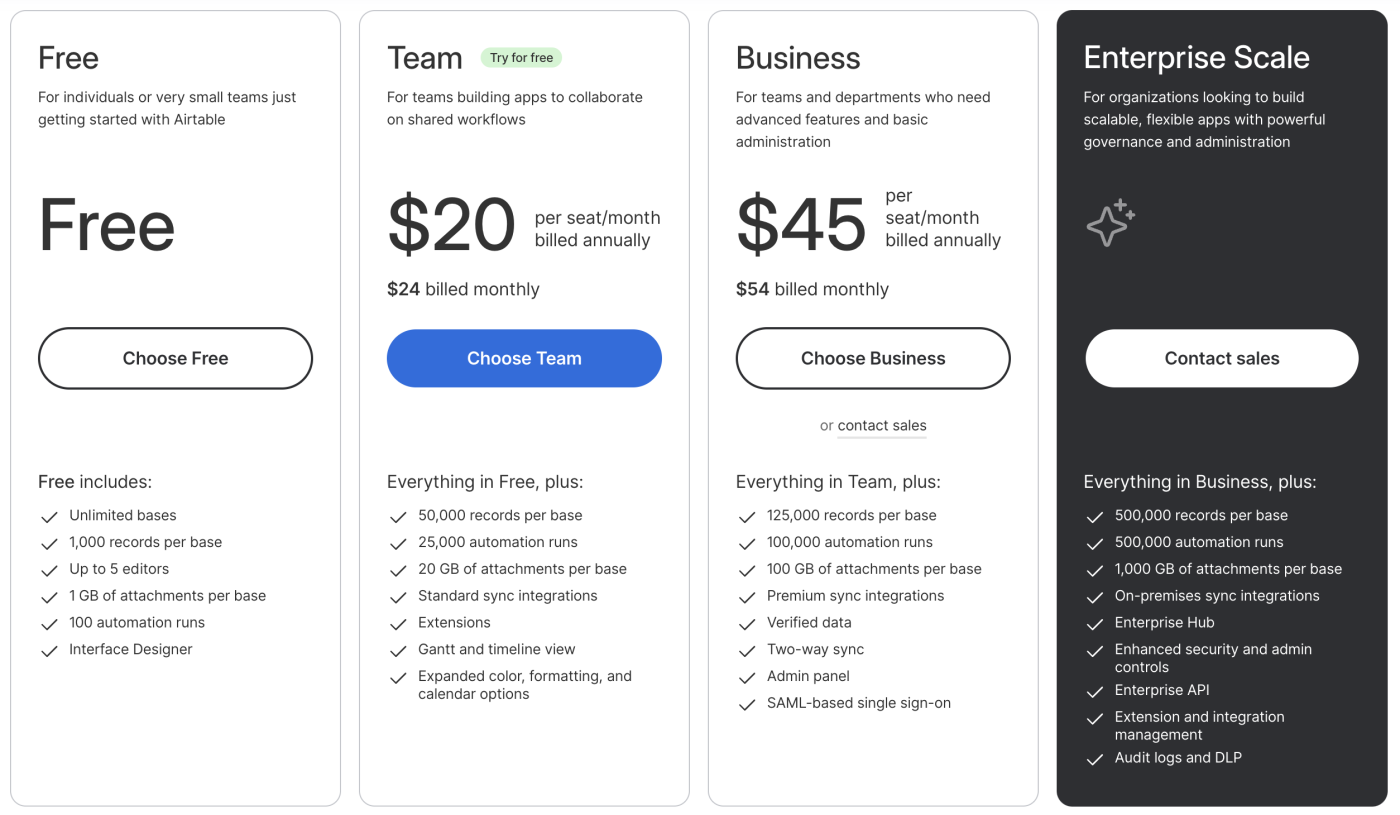
Airtable's pricing structure is laid out in such a way that you can see every plan's capabilities all in one place. When you're making your purchase, this page encourages you to stop and wonder: will 25,000 automation runs be enough? Will 20 GB hold what I need?
As you're contemplating how much you need, you'll also notice that the prices don't increase proportionately with the increase in services. The Business plan costs more than twice as much as the Team plan, but offers four times more attachment space. When the higher overall price means a lower price per item, people are much more susceptible to being upsold.
Apple also does a great job of upselling products. It treats list prices as a starting point, with options to upgrade to more memory, storage, and pre-installed software. Apple knows you're in the middle of your purchase decision at this point, and that it's a good time to get you to pull the trigger on those upgrades.
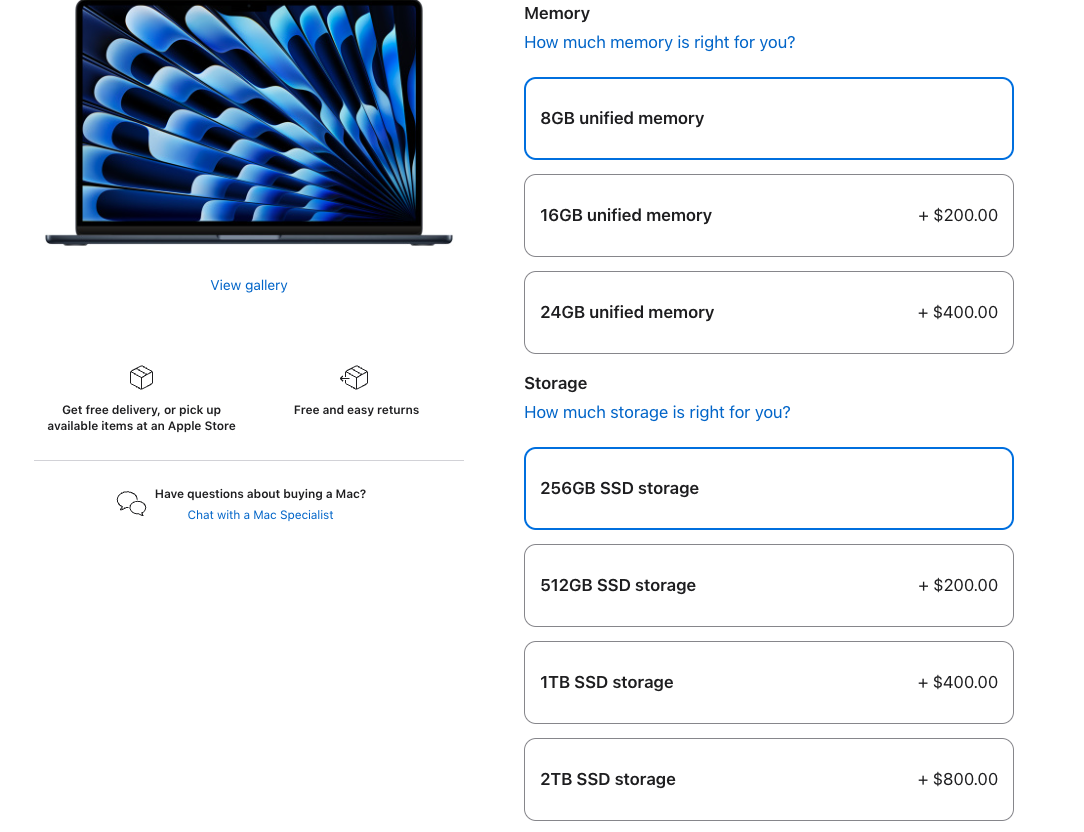
Another common example of upselling can be found in the fine jewelry industry. For example, when you look at engagement rings at Tiffany & Co., you'll be presented with a few different qualities of the same ring. They show a side-by-side comparison for larger carats and higher grades of clarity, color, and cut, hoping you'll spring for something a little nicer (and more expensive).
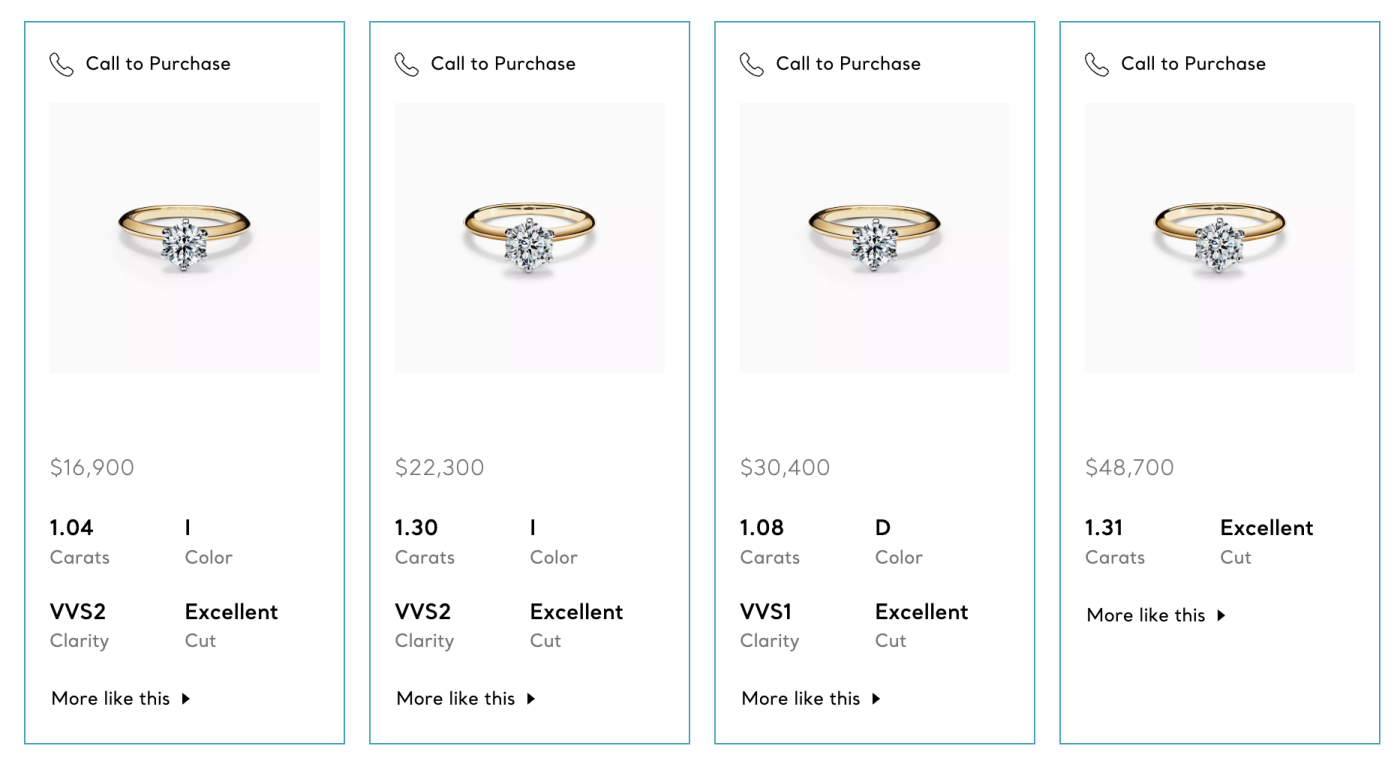
Cross-selling examples
As for cross-selling, the most clear-cut example is Amazon. Whenever you're looking at a product, if you scroll down, you'll always see a "Frequently bought together" section. Amazon also uses automated purchase history analysis to look at what you've bought in the past, find customers with similar buying habits, and suggest items that are popular among people who are looking for the same things you are.
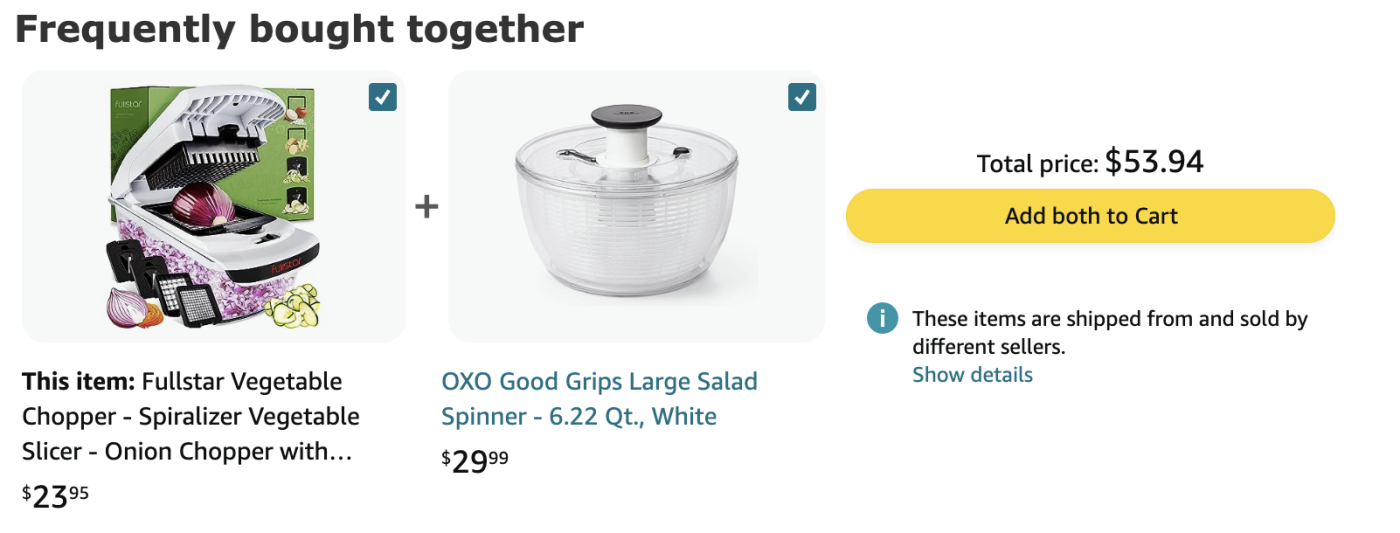
One cross-sell example that seems minor but can be a huge value-add for customers is offering gift wrapping for an additional charge. For example, the iconic Crate & Barrel gift box—it's only an extra $6.50 to add a gift box (can you even buy a gift bag from Target for that price anymore?), so you can subtly flex on everyone at your next wedding shower.

Another way to add value is with personalized recommendations at checkout. I have no business buying a Coach bag, but if I did, they would have gotten me with the cherry bag charm add-on.
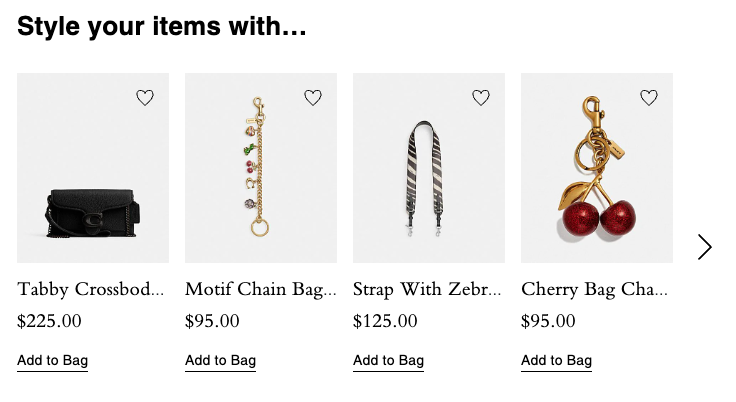
How to use upselling and cross-selling in your business
Upselling and cross-selling are both an art and a science. You need to think creatively about your offerings (and potential offerings) and how they might complement existing purchases. Here are some actionable tips for how to apply these strategies to your business:
1. Analyze your offerings
Examine your existing products and services, and identify potential complementary items.
Assess which combinations make sense and could provide added value to customers.
2. Dive into customer behaviors
Utilize data analytics to understand customer purchase patterns like what, when, and why they buy. After all, upselling and cross-selling won't do anything for you if no one actually buys what you're promoting.
Identify trends and correlations in customer behavior. For example, you might analyze purchase history and browsing habits to find a strong correlation between customers who buy yoga equipment and those who purchase greens supplements.
3. Engage with your customers
Reverse engineer what makes the most sense for your customers. What adds the most value for them? What questions do they have when buying from you? What products or services do they ask you about that you don't yet offer?
Talk directly to existing customers or clients about what they might want in new products or services.
4. Experiment and test
Implement upselling and cross-selling strategies based on your analysis and customer feedback. For example, you might dig through customer reviews to find successful pairings of your products to display as testimonials on your website or create product bundles.
Continuously test different approaches to see what resonates best with your audience. Try A/B testing in email marketing campaigns, experiment with variations in product recommendations, and track conversion rates to identify the most effective strategies.
5. Get creative
Explore innovative ways to bundle or promote products and services. If people who buy product X often also buy product Y, you should absolutely be trying to sell product Y to everyone who buys product X. But don't stop there. Try promoting product Z to those same people, or try upselling them to a higher quality version.
Consider introducing entirely new offerings based on customer demand and preferences. New items also expand your product range, which offers more opportunities to cross-sell complementary products or bundle with existing ones.
Upselling vs. cross-selling FAQ
Have a few more questions about upselling vs. cross-selling? Here's some more clarity about the two pricing strategies.
Can you cross-sell and upsell?
Yes, you can cross-sell and upsell. Let's say you're in the market for a new desk chair for your home office. The upsell would be the Nimbus 3000 of office chairs, with grade-A lumbar support, squeak-free technology, unbreakable wheels, and a seat warmer. Ok, maybe not that good, but you get the picture. The cross-sell would be an under-desk mat, which you'll need to keep those fancy wheels from tearing up the hardwood.
While you can do both at the same time, you may choose to strategically time the strategies. For instance, you might upsell the chair right away but wait a week to send the customer a recommendation for an under-desk mat.
Which is better: upsell or cross-sell?
Um, why not both? Assuming you have enough complementary and tiered products to make both strategies work, the best approach involves a combination to maximize revenue (upsell) and enhance customer satisfaction (cross-sell).
What is bundling?
Bundling is a cross-selling strategy where you get more than what you bargained for. It packages and sells multiple related products or services as a single offering, giving customers added value, convenience, and possible cost savings. For example, you can currently bundle Disney+, Hulu, and ESPN+ subscriptions to save a lot compared to buying each one separately.
Cross-selling and upselling are just two tactics you can employ to increase revenue and improve customer satisfaction. Learn how to automate other customer retention strategies for long-term revenue and growth (without lifting a finger).
Related reading:
This article was originally published in March 2021 and was most recently updated in October 2023.
